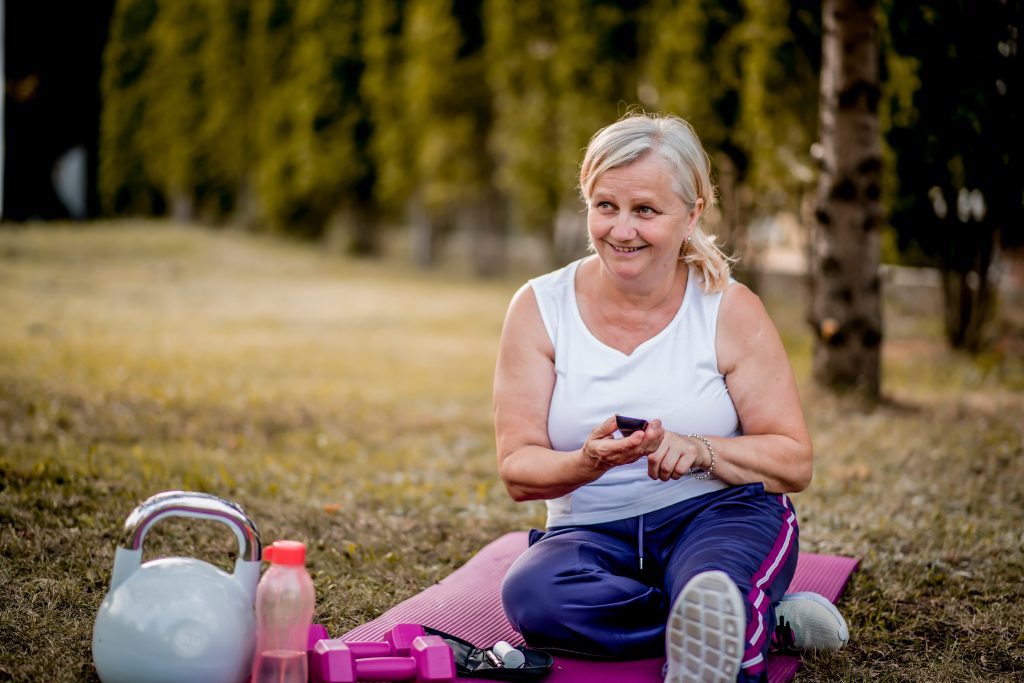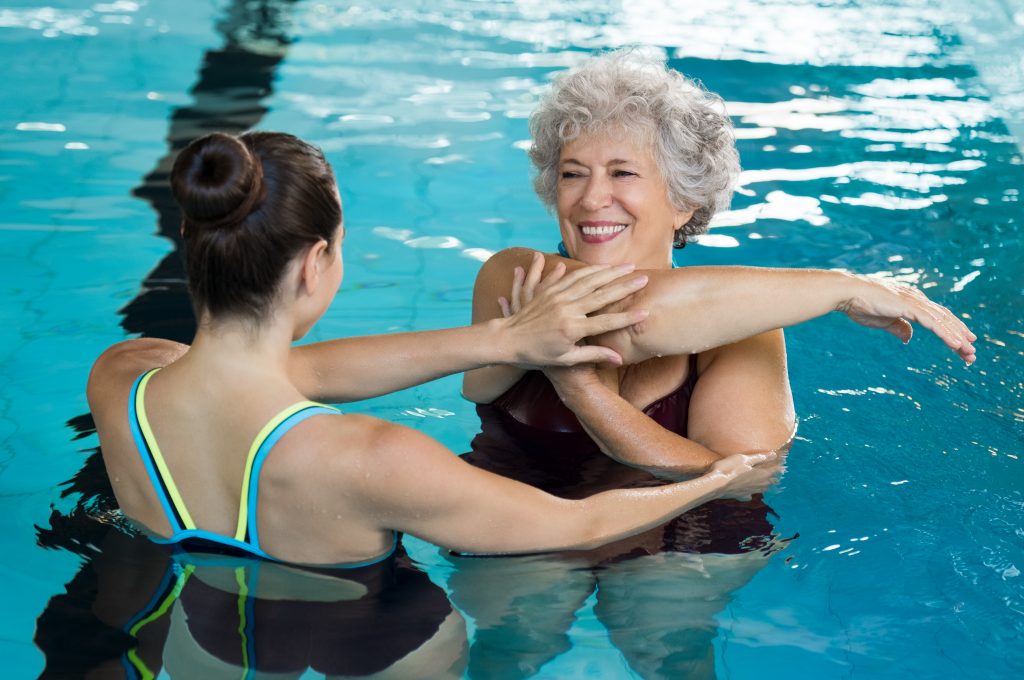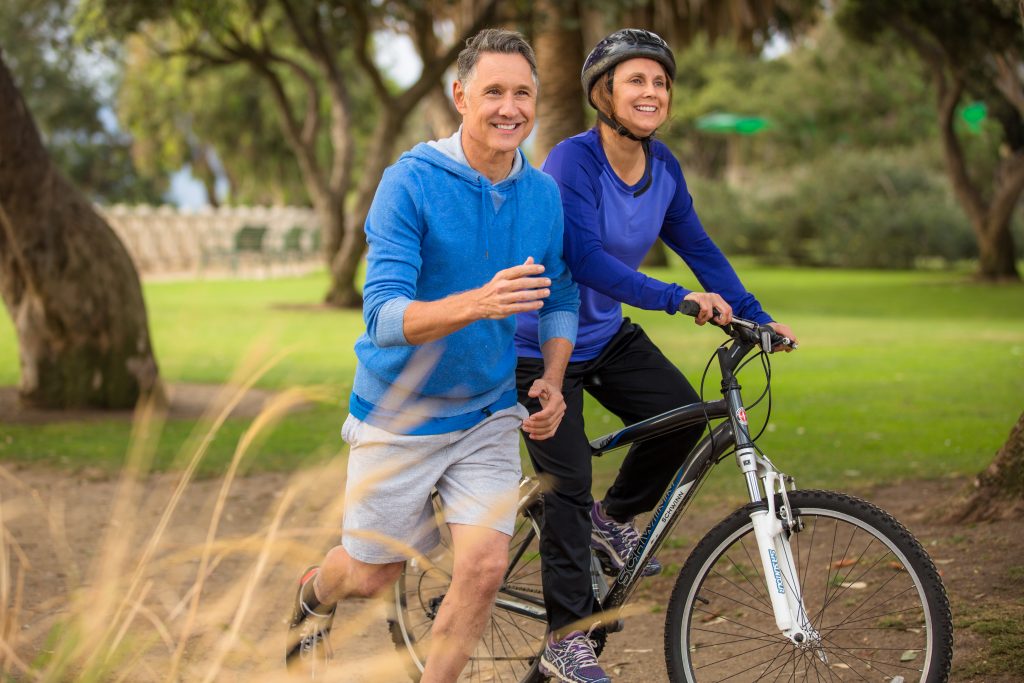November 18, 2021
Top 8 Exercises for Diabetics
Exercise is one of the best natural treatments for diabetes, as it can help control your blood sugar levels. If you have diabetes, starting an exercise program today can improve your symptoms and quality of life.
Continue reading to learn more about the benefits of exercise for diabetes and about the top 8 exercises for people with type 1 or type 2 diabetes.
How Does Exercise Help Diabetes?
 Exercise is very important for diabetics as it decreases insulin resistance, increases insulin release, and promotes the increased production of cellular insulin receptors. Because the large majority of type 2 diabetics are overweight or obese, regular exercise will promote weight loss. Increased fat and those fat cells lead to increased release of fatty acids that inhibit insulin release and increase insulin resistance. These increased fatty acids result in increased reactive oxidants that causes increased cellular level inflammation and further worsen the problems that cause diabetes.
Exercise is very important for diabetics as it decreases insulin resistance, increases insulin release, and promotes the increased production of cellular insulin receptors. Because the large majority of type 2 diabetics are overweight or obese, regular exercise will promote weight loss. Increased fat and those fat cells lead to increased release of fatty acids that inhibit insulin release and increase insulin resistance. These increased fatty acids result in increased reactive oxidants that causes increased cellular level inflammation and further worsen the problems that cause diabetes.
Exercise can help your body use sugar (glucose) as energy. It can reduce high blood pressure and regulate your cholesterol and triglyceride levels. It can also reduce anxiety and stress, and strengthen your muscles and bones.
According to a report from Harvard Medical School, people with diabetes who walk for at least two hours a week are less likely to die from heart disease than those who stay inactive. Women with diabetes who exercise at least four hours a week are shown to be 40% less likely to develop heart disease.
Many doctors will recommend starting an exercise program if you have diabetes and aren’t currently active.
What Are the Top 8 Exercises for Diabetics?
Any type of exercise can benefit people with diabetes. However, if you don’t currently exercise, it can be difficult to know where to start. Here are the top eight exercises for diabetes that can help you get into a regular and consistent routine.
1. Brisk Walking
Walking is a highly popular exercise among  those with diabetes because it is relatively easy and can be done anywhere.
those with diabetes because it is relatively easy and can be done anywhere.
Everyone should engage in brisk walking as it is easily accessible for most of us and does not require a gym membership or equipment.
All you need is a comfortable pair of walking shoes. Go for walks in your neighborhood, or drive to a nearby park that offers fun scenery and one or more trails.
When you walk, aim for a brisk pace that increases your heart rate, as opposed to a slower stroll. Walk for at least 30 minutes a day, five days a week. Invite your friends and family along to make this activity more fun and fulfilling.
2. Dancing
Dancing is an ideal exercise for those who enjoy having fun while staying fit. Many fitness centers offer dance classes such as Zumba for people who prefer dancing over traditional activities for exercise.
If you would rather not join a gym, sign up for a few dance classes you can attend several times a week, such as jazz or hip-hop. After attending these classes for a while, you may feel more confident, motivated, and excited about joining high-intensity dance classes at a local gym.
3. Yoga
Yoga originated in India more than 5,000 years ago. This exercise can improve a wide range of health conditions, including diabetes. Yoga can reduce high blood pressure and stress and improve your digestion to relieve constipation and bloating. It can also strengthen your joints and muscles, improve your balance, and help you lose excess weight.
Yoga can be done by anyone with any fitness level. If you join a yoga class, ask your instructor to show you poses that specifically help people with diabetes. Child’s Pose, Seated Forward Bend, and Upward-Facing Dog are some of the top poses recommended for people with diabetes.
4. Swimming
 Personally I feel that swimming is the best exercise that one can engage in as it incorporates both aerobic and resistance exercise in one activity. It burns more calories than most types of exercise. It also does not cause significant joint stress as many other exercises can.
Personally I feel that swimming is the best exercise that one can engage in as it incorporates both aerobic and resistance exercise in one activity. It burns more calories than most types of exercise. It also does not cause significant joint stress as many other exercises can.
Swimming is an ideal activity for those who have joint pain. Swimming strengthens your heart, lungs, and muscles, and reduces cholesterol, blood sugar, and stress.
Consider joining an aquatics aerobics class at your local gym. If you’re just starting out, swim for at least 10 minutes a day, three times a week, then gradually increase the intensity of your workouts.
5. Weight Training
Weight training and strength training can help you burn excess fat and build lean muscle. It can also help you control your blood sugar and strengthen your muscles, joints, and bones. Be creative with your strength training routine, and do a combination of body-weight exercises, resistance band exercises, and machine exercises.
Keep in mind that muscle is denser than body fat but takes up far less room on your body. Pay attention to the inches you’re losing on various parts of your body, rather than your weight in pounds. Your weight may stay the same for a while as you successfully convert fat into muscle, but you’ll become leaner.
6. Bicycling
Bicycling is another low-impact activity like swimming that can strengthen your heart, lungs, and muscles. It puts less pressure on your joints so you can exercise more comfortably without pain. Cycling can help you lose excess weight and reduce high blood pressure and triglyceride levels.
Ride a bicycle around your neighborhood or at your favorite local park. Or, invest in a stationary bicycle you can ride in the privacy of your own home, especially if you live somewhere that rains or snows a lot. Cycling classes are available at many local fitness centers if you’d like a more social and interactive experience.
7. Team Sports
Many neighborhoods and communities offer recreational sports for people of all ages and fitness levels. If you’re not into solo workouts or lack the motivation to exercise on your own, consider playing team sports. Recreational sports can be a fun way to exercise and improve your diabetes symptoms if you enjoy socializing and networking with others.
Flag football, frisbee, basketball, and tennis are some of the many team sports that may be available at your local community center. You can also find groups of people who play these sports on websites like Meetup.com. Search the Internet for team sporting events in your area, and join a few clubs or groups until you find the ones you like best.
8. Rowing Machine Workouts
I recommend use of a row machine as it also incorporates both aerobic and resistance exercise. It can be adjusted to increase resistance for muscle building activity with reduced joint stress all in one activity. This exercise uses more calories than other common types of exercise. Burning calories promotes weight loss and reduced fat improves factors associated with diabetes.
How Often Should I Exercise?
 According to the American Diabetes Association, diabetics should engage in moderate to intense aerobic activity for 150 minutes per week without taking more than two days off from exercise. There is also substantial research that demonstrates resistance training to increase muscle mass improves blood sugar levels. Currently accepted frequency is at least twice weekly. For non-diabetics, interestingly enough, the American Heart Association has similar recommendations of 150 minutes per week of moderate intensity aerobic exercise, (30 minutes, 5 times a week) or 75 minutes of vigorous aerobic activity spread over 3 days (25 minutes each), or a combination of both as well as 2 times per week of muscle strengthening exercise.
According to the American Diabetes Association, diabetics should engage in moderate to intense aerobic activity for 150 minutes per week without taking more than two days off from exercise. There is also substantial research that demonstrates resistance training to increase muscle mass improves blood sugar levels. Currently accepted frequency is at least twice weekly. For non-diabetics, interestingly enough, the American Heart Association has similar recommendations of 150 minutes per week of moderate intensity aerobic exercise, (30 minutes, 5 times a week) or 75 minutes of vigorous aerobic activity spread over 3 days (25 minutes each), or a combination of both as well as 2 times per week of muscle strengthening exercise.
DISCLAIMER
The information featured in this site is general in nature. The site provides health information designed to complement your personal health management. It does not provide medical advice or health services and is not meant to replace professional advice or imply coverage of specific clinical services or products. The inclusion of links to other web sites does not imply any endorsement of the material on such websites.